Component 1: Health and Safety Practices
Standard 1.a: Children engage in structured and unstructured physical activity.
By the following age ranges, children typically, for example:
- Sustain physical activity for at least three to five minutes at a time
- Participate in simple movement games with an adult (e.g., following a moving object or person with their eyes or body)
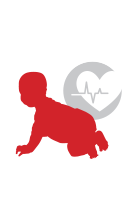
- Participate in active physical play with an adult
- Watch and often run when they see older children running
- Attempt to try new games and toys
- Stand with feet wide apart and sway to the sound of music
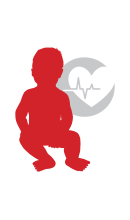
- Wield larger toys with some accuracy (e.g., pounding on a pegboard and pegs or on a pounding board)
- Back into a chair to sit down
- Squat while playing
- Carry a large toy while walking or playing
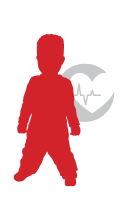
- Sustain physical activity for at least 15 minutes at a time for at least 30 minutes total each day
- Participate in outdoor play
- Try new games and toys without assistance
- Actively participate in games and dances
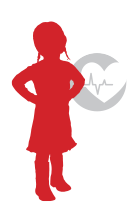
- Carry bags or objects over short distances
- Practice kicking, throwing, and running
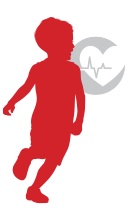
- Increase their amount of play and activity, using more muscles and for longer periods of time (e.g., at least 60 minutes total each day)
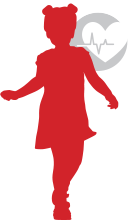
Standard 1.b: Children become increasingly able to identify unsafe situations and gradually learn strategies for responding to them.
By the following age ranges, children typically, for example:
- Express discomfort or anxiety in stressful situations
- Demonstrates a recognition of the difference between their primary caregiver and a stranger

- Sometime respond appropriately to redirection given by an adult caregiver

- Respond appropriately to redirection by adults unless too caught up in a game or emotion
- Demonstrate a beginning understanding when adults communicate “stop” or “danger” in their home language by stopping or listening to adults
- Hold hands briefly with adults when walking but often break contact when distracted by another person or object

- Recognize or identify some harmful or unsafe objects and situations
- Stop a behavior in response to direction by an adult
- Understand and participate in the routine of holding hands with an adult when walking in public places
- Seek an adult’s help in some unsafe or dangerous situations
- Follow emergency routines after adult instruction (e.g., fire drills)

- Recognize unsafe situations and tell an adult; alert adult when another child is in a dangerous situation
- Understand the difference between “safe touch” and “unsafe touch,” especially if previously instructed
- Communicate what the consequences are of unsafe behaviors
- With adult assistance, look both ways before crossing the street

- Follow safety rules with adult assistance
- Recognize symbols or signs for danger (e.g., poison labels) and avoid those objects or areas
- Understand the consequences of not following rules related to safety

Standard 1.c: Children develop self-help skills.
By the following age ranges, children typically, for example:
- Fuss or cry when hungry and quiet down when picked up to be fed in a timely manner
- Coordinate sucking and swallowing
- Assist with self-feeding by holding a bottle or breast; turn their head away when full
- Explore food with their hands and fingers (e.g., crackers and other easy-to handle foods)
- Accept most basic care routines administered by adults (e.g., gum cleansing or nose wiping)
- Relax during bathing routines
- Babble or coo after diapering
- Indicate their needs and wants (e.g., wanting food or a dirty diaper to be changed)

- Point to food when wanting more
- Feed themselves finger foods
- Drink from a cup with some spilling
- Drink from a straw
- Use a spoon with some spilling
- Accept more involved care routines administered by adults (e.g., tooth brushing)
- Participate in handwashing with assistance
- Participate in dressing or attempt to dress themselves
- Remove some clothing
- Use signs, body language, or vocalizations to seek out help from an adult

- Feed themselves with spoon and fork (with some spilling) if early self-help skills are valued and taught in their family culture
- Drink from a cup (with some spilling) if early self-help skills are valued and taught in their family culture
- Participate in some self teeth-brushing while an adult is helping them brush their teeth
- Indicate choices in clothes and shoes by gesturing or using simple words
- Have limited control over bowels and bladder
- Use a tissue when offered by an adult to wipe nose, face, or hands

- Understand the difference between food and non-food items
- Recognize when foods are new to them and choose whether to taste or not
- Cooperate and assist with tooth brushing
- Wash hands with assistance
- Attempt dressing and undressing
- Sit on a toilet
- Obtain and use tissues to wipe their nose, face, or hands
- Indicate when not feeling well

- Help with mealtime routines, such as setting a table
- Brush their teeth with assistance from an adult
- Wash and dry hands with verbal prompts and support
- Use a toilet
- Cover their mouth when coughing
- Dress or undress with minimal assistance
- Put their shoes on but may need assistance tying them
- Choose their own clothes to wear

- Help in preparing snacks and meals
- Demonstrate independence in personal self-care skills (e.g., washing hands, brushing teeth)
- Dress or undress
- Manage zippers, buttons, buckles, and Velcro
- Tell an adult caregiver when tired

